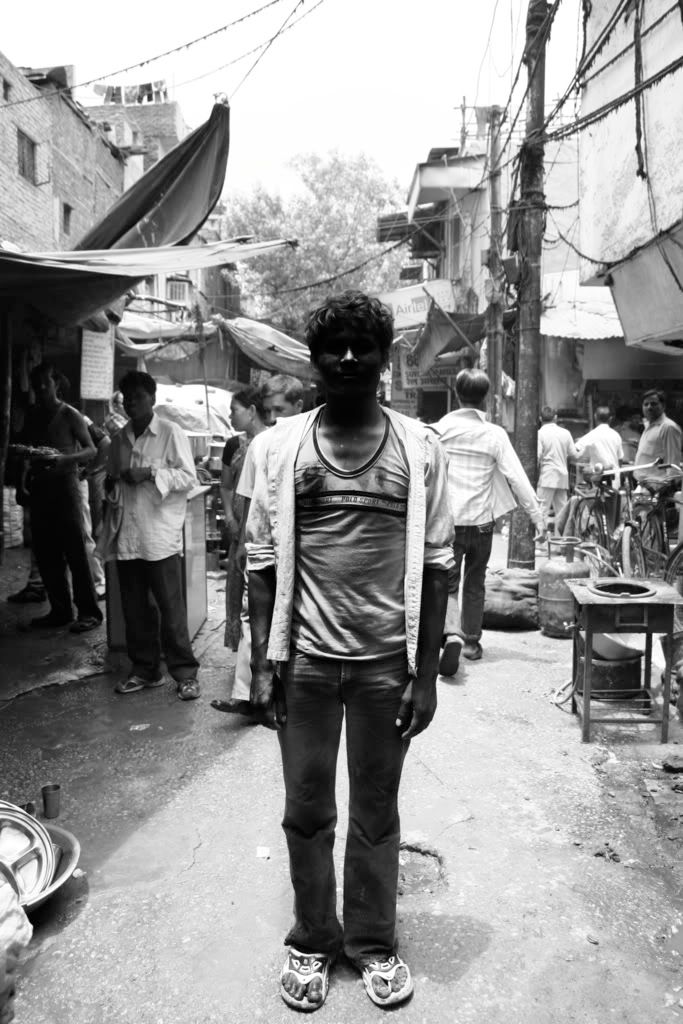 "
"
As an artist, photographer, activist, child of Diaspora, I have been trying to understand more of my position with a camera. What is it that I am trying to cover through one photograph without sensationalizing the subject? I'll start off with the color image. In order to volunteer with an orphanage located in this market place I was recommended to take a tour with the organization in order to get a better understanding of the environment and circumstances the children live under. As I took out my camera I felt as if a spot light was placed over my head. I was already "othered" since i was a tourist in western clothing but given the location, foreigners where everywhere. However my camera invited suspicion of my placement at this location. I was either approached or it was made clear that my camera was not invited. But for this picture, I was invited by this young man to take a photo. He was working at a food stand for hot chapati's and chai, a popular snack in India. He was friends with our tour guide and had become comfortable with foreigners with cameras since this was the first time people had come into this neighborhood taking pictures of there surroundings. He stood tall and confident asking me to submit his photograph to "Bollywood". Bollywood is India's answer to Hollywood. An industry that is admired all around the world. Bollywood represents to young men, wealth, women, attention, being desired and success.
Deirdre brought up the topic of anonymity. With the changes from color to black and white how does my subject change to its audience? By darkening my main subject and making the subject anonymous, I feel that my portrait invites suspicion to its subject. ANY SUGGESTIONS FOLKS?
"Not Identifiable then element is said to be anonymous"
1 comment:
I appreciate the questions you're asking, Ixquel. We'll talk more about it. When you've had time to digest Hank's talk we can further discuss the implications of these choices.
Carla was really happy to meet you. I'll put you in direct contact.
dv
Post a Comment